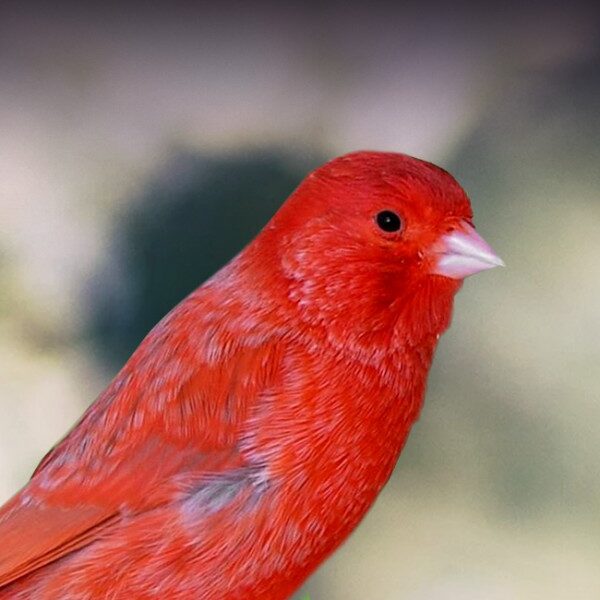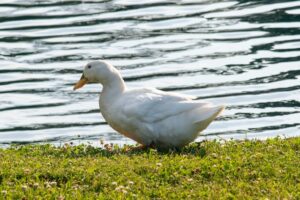
The Fascinating History and Evolution of Red Factor Canaries
Contents
- 1 Red canaries were originally prized for their ability to warn miners of danger and their ability to detect poisonous gases.
- 2 The red factor canary has been bred from a number of other breeds, including the white-eyed goldfinch, the greenfinch and the gold ringdove.
- 3 The oldest surviving record of the use of canaries in mines was recorded in 1598 by German miner Georg Agricola.
- 4 There are two basic types of red factor canaries – Old English and Modern.
- 5 Genetics play a major role in the appearance of your red factor canary, but so does its diet.
- 6 A common misconception about red factor canaries is that they will only eat red millet seed, when this is actually incorrect.
- 7 If you have more than one bird, it’s important to keep them separate until they are fully grown and pair bonded to avoid fighting amongst themselves.
- 8 There are many misconceptions about red factor canaries, but they make excellent pets if properly cared for!
- 9 Conclusion
Red factor canaries are a type of wild or domesticated canary that have been bred over centuries. Red factor canaries are known for their red feathers and their ability to detect danger in mines. While they may be beautiful, it’s important to know how to care for them properly as they can be difficult pets if not treated correctly!
Red canaries were originally prized for their ability to warn miners of danger and their ability to detect poisonous gases.
Red canaries were originally prized for their ability to warn miners of danger and their ability to detect poisonous gases. It was believed that if a miner were down in the mine, his red canary would start singing loudly, warning him of any impending danger.
A lot has changed since then and these days they’re more likely to be used as pets than as a vital part of your safety plan (although some people do keep them around). But there are still some situations where having one around might come in handy:
- In the home – Canaries can be trained to detect carbon monoxide and smoke, which can be very helpful if you live in an area prone to forest fires or house fires.* When traveling – If you’re going somewhere new and want someone else watching out for you instead of relying solely on technology (like GPS).
The red factor canary has been bred from a number of other breeds, including the white-eyed goldfinch, the greenfinch and the gold ringdove.
The red factor canary has been bred from a number of other breeds, including the white-eyed goldfinch, the greenfinch and the gold ringdove.
The original red factor canary was created when two white-eyed goldfinches were crossed with one another. This produced offspring that were both yellow-headed and had red plumage on their breasts and bellies. Later in 1902, a further cross between this new breed of birds with some green finches (a type of finch) produced offspring with an even deeper shade of red than before; this new line became known as ‘the deep rich scarlet’.
The oldest surviving record of the use of canaries in mines was recorded in 1598 by German miner Georg Agricola.
The oldest surviving record of the use of canaries in mines was recorded in 1598 by German miner Georg Agricola. In his work “De Re Metallica,” he described how the birds were used to detect poisonous gases, which would kill them before they reached humans. The birds would then warn miners by falling from their perches and dying on the floor, allowing time for workers to escape before succumbing themselves.
The method was later refined with advances in technology such as gas masks and early respirators that could be used alongside live animals (including dogs). This meant that if there was no response from your dog or bird after entering an area filled with dangerous fumes, you knew something was wrong without needing them to die first!
There are two basic types of red factor canaries – Old English and Modern.
There are two basic types of red factor canaries – Old English and Modern. Old English canaries are the original red factor canaries, bred for their color and song. They have a more rounded head, a shorter beak and less body weight than the modern variety. The modern variety has been bred to have a longer beak and more body weight than its ancestors, but they’re not as hardy or easy to breed in captivity as their forebears were.
Modern Canaries are more popular than Old English Canaries but they aren’t as hardy or easy to breed in captivity
Genetics play a major role in the appearance of your red factor canary, but so does its diet.
The genetics of your canary are the most important factor in determining its appearance, but the diet plays a large role as well. Canaries are omnivores, so they can eat seeds and vegetables as well as insects.
A good diet is important for the health and longevity of your pet.
A common misconception about red factor canaries is that they will only eat red millet seed, when this is actually incorrect.
A common misconception about red factor canaries is that they will only eat red millet seed, when this is actually incorrect. While it is true that the majority of their diet should be made up of millet, they do have a large appetite and will also eat other seeds, vegetables and fruits.
The best way to feed your canary is by offering them a mixture of different foods so that it gets all the nutrients it needs to thrive. You can choose from different types of seed or pellet mixes depending on how picky your bird may be (and let’s be honest–canaries aren’t exactly known for being picky).
If you have more than one bird, it’s important to keep them separate until they are fully grown and pair bonded to avoid fighting amongst themselves.
Canaries are social animals, but they can be aggressive. If you have more than one bird, it’s important to keep them separate until they are fully grown and pair bonded to avoid fighting amongst themselves. This can take anywhere from 6 months to a year for the birds to reach maturity. Once they’ve reached maturity, it’s time for your male canary to find his mate!
There are many misconceptions about red factor canaries, but they make excellent pets if properly cared for!
There are many misconceptions about red factor canaries, but they make excellent pets if properly cared for!
Canaries are social birds and need to be kept in pairs or groups. A pair of birds will bond with each other and sing for each other (and only each other), whereas a group of canaries will all sing together. The males also have more vibrant colors than the females, which is why you’ll see pet shops selling “male/female” pairs or “male/female/neutral” trios.
Red factor canaries should never be housed alone because they need companionship; however, they do not necessarily need another red factor bird because they’re so social that almost any other type of bird will suffice as long as it’s not too big (like macaws). In fact, some breeders believe that keeping multiple kinds of color variants together helps promote healthy breeding behaviors among the flock since there’s always someone new around who might catch their eye!
Conclusion
We hope that this article has given you a better understanding of red factor canaries and their history. If you want to learn more about these fascinating birds, check out our blog post on how to care for them properly.



Average Rating